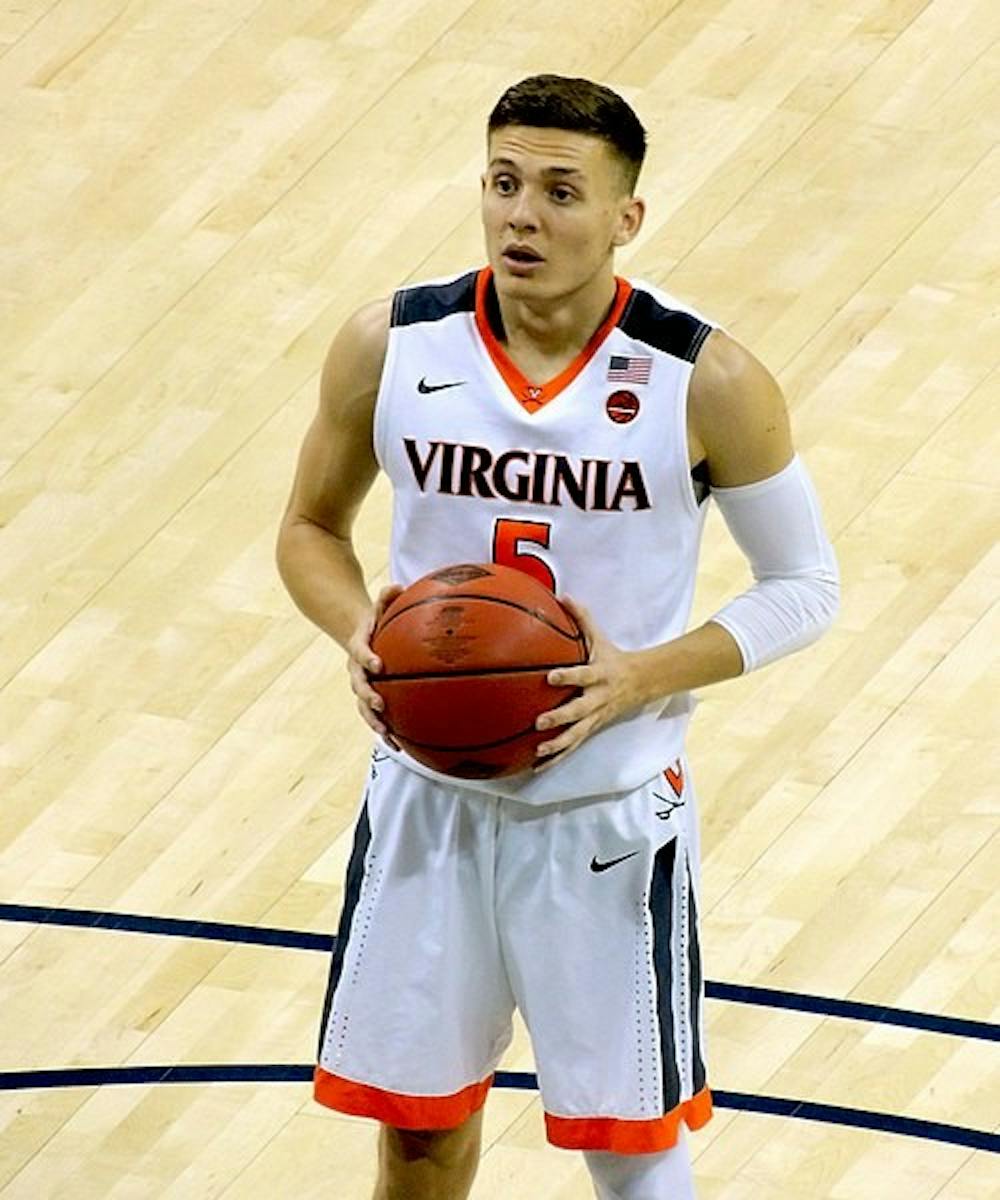I may or may not have come in last place in my high school’s NCAA tournament bracket pool last year. Either way, it is irrelevant because this year, I placed in the 99th percentile of all ESPN brackets. After some embarrassments in years past, I made sure that this year would be better, and now I’ve won just about every bracket pool I entered, including The News-Letter’s Sports section’s bracket pool. With so many teams competing, many people think it all comes down to luck, but I’m here to tell you that there’s a method to the madness.
A lot of people on this campus are pretty good at math, so let’s talk numbers. There are a few statistics that, when combined, can serve as good predictors of tournament success. Looking at these might help you bring up your bracket’s points significantly.
The first number is three-point percentage. In the era of Stephen Curry and James Harden, three-point shooting is as important as ever. In fact, this is probably the only stat you need to look at to try and guess your upsets. Upsets often happen when the underdog goes on some crazy shooting streak from deep and the other team can’t catch up. So it only helps when the underdog is already good at shooting the three in the first place.
Some upsets that I predicted that followed this trend: University of California, Irvine beating Kansas State University (35.9 3P percent vs. 34.4 3P percent) and University of Central Florida beating Virginia Commonwealth University (36.5 3P percent vs. 30.5 3P percent). The team with the worst three-point percentage out of all 68 teams? The Duke University Blue Devils at 30.2 percent. If you watched the tournament, you’ll know this is important later.
The next most important stat is not as straight forward as three-point percentage, but is nonetheless extremely important: defensive stoppage power. Defensive stoppage power is an advanced statistic and is what it sounds like. According to NCAA.com, it is “the percentage of a team’s defensive possessions that end with a stop, adjusted for strength of schedule. Values are on a scale from 1 to 10.” So basically, it’s how good the team is at stopping good teams from scoring. And as the old adage goes, defense wins championships.
All of the number one seeds had a nine or higher with the exception of Gonzaga University, who I correctly guessed would lose relatively early to Texas Tech University in the Elite Eight. Teams like Auburn University and University of Oregon, who were not expected to go as far as they did, both had above a seven in this stat, which is fairly high for teams with their seeds.
Obviously, defense is important, but what makes this stat so important is that a defensively dominant team can control the pace of the game. This is something that University of Virginia (UVA) — who I correctly predicted would be the national champion — is notorious for. They play the game slowly and can force their opponent to match their pace. Because the opponent isn’t used to playing that way, they make mistakes and UVA can easily pull away.
Honestly, this article can simply end here. The only two teams to have both a three-point percentage of 36 or above and a defensive stoppage power of 9.5 or above were the two in the national championship game: Texas Tech and Virginia. In fact, Texas Tech had a perfect 10 in defensive stoppage power. The results speak for themselves; these statistics are incredibly important to consistent success.
But I want to talk a little bit more about some of the more eventful outcomes of this tournament. I will admit, I had University of North Carolina at Chapel Hill in my Final Four, not Auburn. But I did correctly pick Michigan State University to be in the Final Four (if you’re paying attention, that’s three-quarters of the Final Four predicted correctly). Most people had Duke in that position, and the Blue Devils were the most popular pick for champion as well. Now, I may just be a Duke hater because I predicted they would lose one round earlier than they did. But it wasn’t hard to recognize that Duke would not come out of their region victorious.
As I said before, Duke was literally the worst three-point shooting team in the entire tournament. Credit to Zion Williamson, who seemed to develop a much more consistent three-point shot overnight to try and compensate for the team’s obvious weakness. But one player, even Zion, cannot fix such a glaring and easily-exposable weakness in a skill that is so critical to the modern game of basketball.
A team like University of Central Florida (UCF), who has 7’6” Tacko Fall on their team, can easily guard the paint and force Duke to shoot the shot they hate most. Coach Krzyzewski knows what he’s doing, though, and was able to get Fall into foul trouble, minimizing his impact on the game. But the game against UCF is one Duke should have lost. After missing crucial free throws, Duke only won because UCF missed an open layup at the buzzer.
After another close call against Virginia Tech, Duke was barely getting by. They fell to Michigan State, who shot 38.4 percent from three and had an 8.3 defensive stoppage power during the regular season. Interestingly, what killed Duke in that game was their 17 turnovers, not necessarily their three-point shooting, even though it still wasn’t very good that game. Duke was destined to eventually lose to a team that better fit the mold of modern basketball, and Michigan State was just the first team to finally close their game well against them.
Let’s finish by talking about the most important team in this tournament: the Virginia Cavaliers. I’ll admit, UVA probably didn’t deserve to get all the way to the championship due to their sloppy play and close finishes. A ridiculous buzzer beater by Mamadi Diakite and an uncharacteristic turnover by Carsen Edwards saved them against Purdue University, and a stupid foul by Samir Doughty let them overcome Auburn. But nevertheless they won those games and I guessed that right.
After being the first one seed to lose to a 16 seed, UVA would not be denied redemption this year. Their consistency, veteran players and excellent coach only complemented their excellent three-point shooting and team defense. Every single opponent UVA played scored below their season average, with the exception of Texas Tech. Although the halftime score against Gardner-Webb University in the first round might say otherwise, Virginia was able to dominate the teams they played at points during each and every game (a feat which was easy to predict for fans as smart as me). And their insane overtime championship game was arguably the most exciting championship game ever.
While Duke’s big three freshmen are all leaving, Kihei Clark and Diakite are all extremely likely to return to UVA next season. After winning their first ever championship, the teams’ fans will hope to repeat their postseason success in 2020. With Tony Bennett’s three-and-D system in place, that may be more likely than some think.





